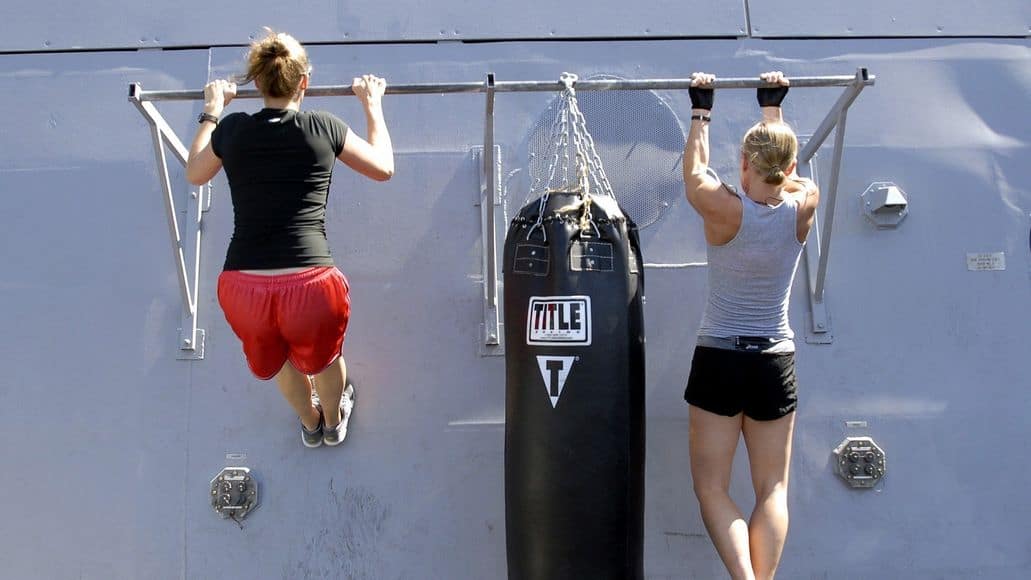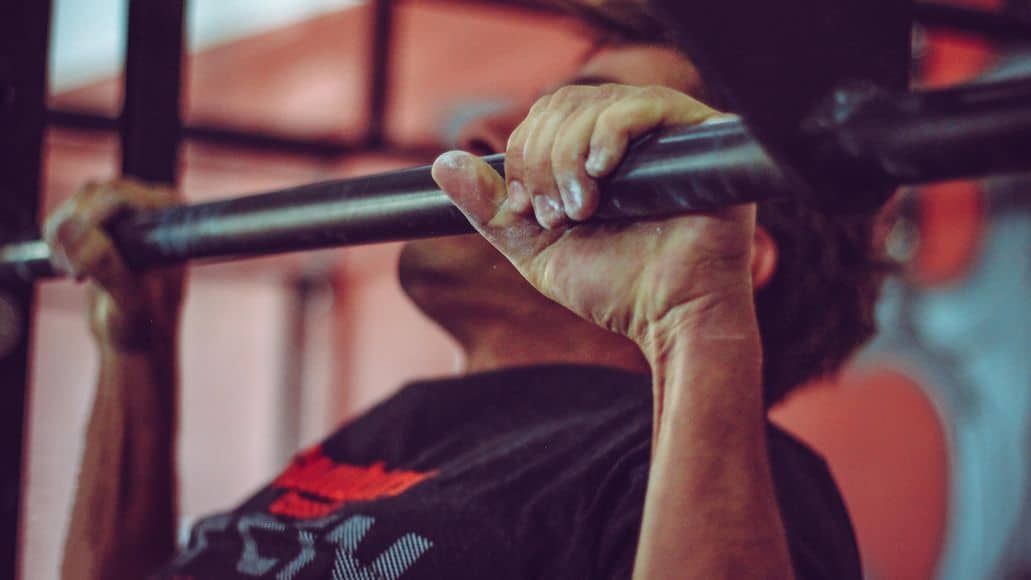 Chin-ups are hard. Especially for the beginner.
Chin-ups are hard. Especially for the beginner.
And even people who work out a lot can find chin-ups difficult.
But that doesn’t mean they aren’t worth it!
According to a paper published in 2010, the major muscles activated in chin-ups are the latissimus dorsi (lats), biceps brachii (biceps), infraspinatus (one of the four rotator cuff muscles), lower trapezius (traps), and pectoralis major (pecs).
That’s a lot of muscles from one simple exercise. Two exercises, if you count pull-ups as a separate thing, which many do.
They differ in the positioning of the hands. Chin-ups are done with an underhand grip, while pull-ups are done with an overhand grip. Both exercises use the same muscles, but chin-ups are slightly easier..
Proper Chin-Up Form
With the knowledge of which muscles in your arms, back, and shoulders are used, how do you go about actually doing a chin-up with proper form?
The starting position for chin-ups is arms straight above your head, hanging from the bar.
Make sure that your legs are straight or in front of you, but never crossed. Also, try to make sure your body has a slight hollow.
What this means is that your back is straight and your hips are in a slight thrust – the easiest way to do this is to squeeze your glutes while trying to pull your belly button to your spine.

From there, you want to pull yourself up to the bar, making sure not to flare your elbows. Pull yourself up until your elbows are at your sides and your chest is at the bar, and then let yourself down again.
If you have trouble pulling yourself up, try to envision bending the bar. You will find yourself going up without telling yourself to pull up!
That’s the form for strict chin-ups or pull-ups. There’s a variation of these called kipping, which allows you to do more in a shorter period of time.
What is kipping?
Kipping Chin-Ups/Pull-Ups
A kipping pull-up is when you use your lower body to help propel you up, working out your upper body less than you would on a strict pull-up or chin-up.
With a kipping pull-up, you swing your legs and snap your hips to push yourself upwards.
There’s also an advanced variation called butterfly kipping, which is a continual-motion version of kipping, and gets you through your number of reps faster.
With butterfly kipping, you propel yourself upwards then let yourself drop, and repeat, rather than propelling yourself upwards but lowering yourself slowly and repeating.
Training Without A Pull-Up Bar
So, now that you know what chin-ups and pull-ups are, and what kipping is, what do you do if you don’t have access to a bar on which to train?
The obvious solution is to buy a pull-up bar that you can mount on a doorway, etc. They’re not expensive.
But the great thing about pull-ups is that you can train almost anywhere.
A tree branch, a door frame, many of the things you see in your everyday life could be a makeshift pull-up bar. (Some door-hinges might not be able to support you so be careful.)
But if you aren’t comfortable using those, there are some pull-up variations with weights that allow you to work the same muscles without having to use strange objects.
The best non-bar variation is the lat pull-down, and while it does require you to have a gym and specific equipment, it’s the best alternative to doing pull-ups.
If you don’t have access to a gym, you can also do exercises that work the same groups of muscles using either a barbell or a set of dumbbells.
One of the best exercises to do is a shoulder-press.
- To start, lift the weight(s) over your head with an overhand grip (palms facing away from the body).
- Your arms and back should be completely straight.
- Pull your shoulders down and back, bringing the weight to your chest.
- Return to the starting position and repeat.
Chin-up Variations

In addition to your average chin-up, your pull-up, and your kipping pull-up, there are variations to make chin-ups easier or harder, depending on your fitness level and how well you perform chin-ups.
For Beginners
If you are a beginner, rather than jumping right in with full chin-ups, you can start with rows or chin-up negatives.
A negative chin-up is when you start from the top of the chin-up position, rather than from the bottom. This means that you jump up, put your chin over the bar, and then slowly lower yourself down until your arms are straight.
When you can do 10 negatives in a row with good form, then you can usually move on to the normal chin-ups.
Negatives can still be difficult for some, so using a resistance band to assist with pull-ups is also an option. Loop the band over the bar, put one foot or knee in the band, and allow it to help move you up towards the bar.
This way, your body understands the movement that you are going for, while you still do not yet have to lift your entire weight yourself.
If you can pump out normal chin-ups easily, why not try some variations to make them harder so you can work more of your muscles?
Advanced Variations
One of the easiest ways to push yourself after getting better at pull-ups is to add a weighted vest to your routine.
While pull-ups are normally considered a bodyweight exercise, with the addition of a weighted vest, you can push yourself even further and really work those back, shoulder, and arm muscles.
Another popular variation is the one-armed pull-up, although sometimes this is the most difficult, as it requires more balance than any of the other variations.
Just perform the pull-up as usual, but keep one arm off of the bar.
The position of your arm doesn’t matter, as long as your body is centered and you are pulling through the entire motion.
Training Frequency
So now that you know what to do, how to do it, and how to make it harder, you may be wondering how often you need to engage in these exercises.
Most trainers will tell you to do pull-ups as often as possible – they can be done between sets of other exercises at the gym, or every time you walk through a doorway at home.
The more you do over the course of a day, the better you will become at chin-ups and pull-ups. You can also change the kind of pull-up you are doing day-to-day, to increase your range.
But be sure to take a rest day when you need one, as your muscles need rest to grow.
These are the pull-up basics, along with variations. Keeping this in mind, train hard, and one day you will be able to pump out pull-ups without issue!
Leave a Reply